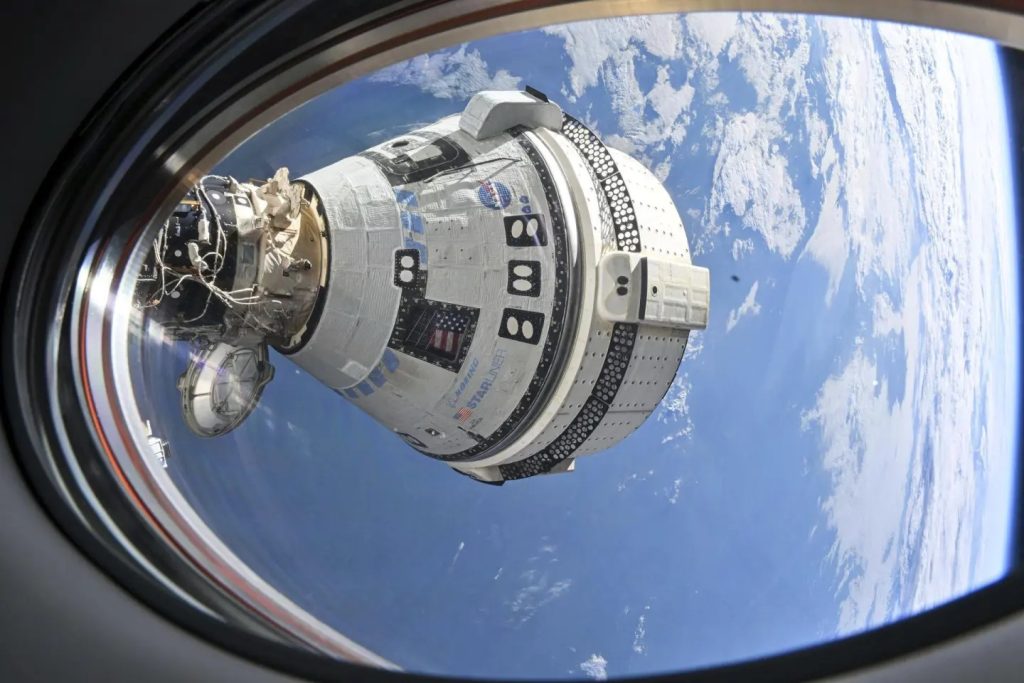Summarize this content to 2000 words in 6 paragraphs
An image captured through the window of a docked SpaceX Dragon capsule shows Boeing’s Starliner capsule hooked up to the International Space Station. (NASA Photo)
Continuing concerns about the thruster system on Boeing’s Starliner space capsule may lead NASA to decide against letting astronauts take the craft back down to Earth from the International Space Station, mission managers said today.
In such a scenario, the two astronauts who rode to the ISS in Starliner for the capsule’s first crewed test mission in June would fly back down in a SpaceX Dragon capsule next February.
“We haven’t approved this plan,” Steve Stich, program manager for NASA’s Commercial Crew Program, told journalists during a teleconference. “In other words, we’ve done all the work to make sure this plan is there.”
Going ahead with the contingency plan would require shuffling arrangements for the next crew that’s due to take a Dragon to the ISS, known as Crew-9.
That crew would be cut back from four to two astronauts. Starliner’s test pilots, Butch Wilmore and Sunita Williams, would remain on the station for Crew-9’s tour of duty and return to Earth with Crew-9 as part of the regular rotation.
This week NASA pushed back Crew-9’s scheduled launch to no earlier than Sept. 24 to accommodate potential changes. Because of the parking arrangements at the station, the Starliner capsule would have to undock from the station before the Crew-9 launch and make an uncrewed, robotically controlled descent and landing.
At the time of the Starliner launch, NASA expected Wilmore and Williams to spend only a couple of weeks on the space station. But several of the capsule’s thrusters malfunctioned during the approach to the station, and mission managers also detected multiple leaks in Starliner’s helium pressurization system.
Even though the crew docked successfully, NASA and Boeing began a series of tests to ensure the thrusters and the helium system would work properly during the descent to Earth.
Stich said on-the-ground tests have given engineers “a lot of confidence in the thrusters, but we can’t totally prove with certainty what we’re seeing on orbit is exactly what’s been replicated on the ground.” The issue may have to do with a temporary blockage caused by a Teflon seal in the thruster system, he said.
Dana Weigel, manager of NASA’s International Space Station Program, said Wilmore and Williams have been involved in the discussions relating to Starliner’s issues. “I’d say they’re prepared for either path that we go down,” Weigel said.
Stich said NASA and Boeing were continuing to study the thruster and helium issues while also working out the procedures and software updates that would be necessary for the contingency plan.
“We need to probably decide, likely in the middle of August, one path or the other to go ahead and meet the launch date for Crew-9,” he said. “We’re kind of laying out that path this week.”


